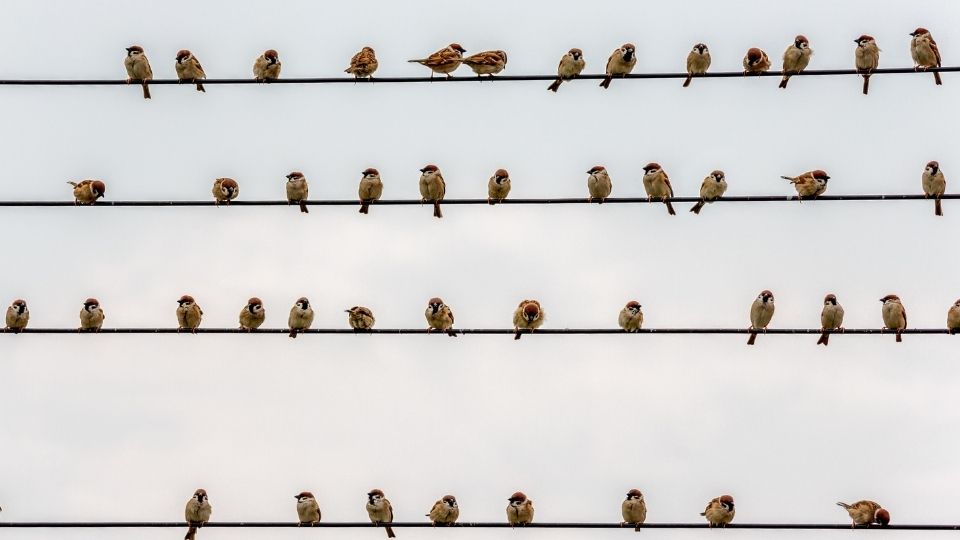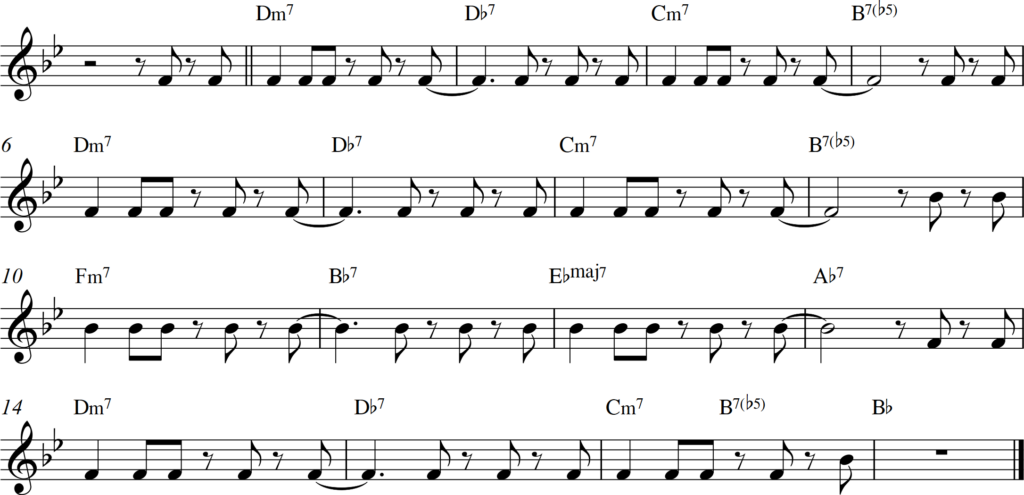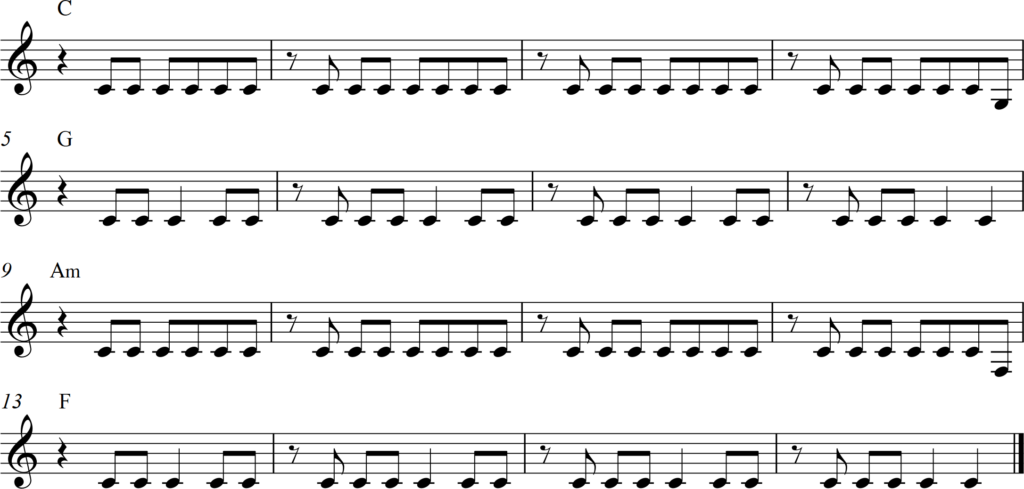
Most of the time, we use more than one note when we compose a melody or a motif. But it’s completely possible to write good melodies using only one note. But the truth is, there are no songs (at least not successful ones) that have only one note in the melody for the entire song. “One note melody” songs only use one note in certain parts of the song, and they use a “regular” melody in other parts of the song. Even “One Note Samba”, in which they deliberately composed part with only one note, contains SEVEN notes in the entire melody. So let’s see how a one-note melody can work, and how they use it in actual songs.
How is a melody possible with one note?
Writing melodies or motifs with only one note can work because the melody is only one part of the song. And you probably can’t write a good song by using only one note in the entire song, you can only use this technique in one part of the song. For example, many of these songs have a “one-note” part only in the verse, the pre-chorus, or the chorus. Or even just a small part of the verse.
But why does it work? First of all, it works, because the melody has rhythm too. And that rhythm has to be interesting enough to sound good. Secondly, the underlying chords are usually changing throughout these sections, and the different chords give different contexts to that same melody note. And thirdly, the music itself, or the “beat”, the groove that the rhythm section is playing also needs to be interesting.
Antonio Carlos Jobim – One Note Samba
This song has an old-school structure. It has a section “A” and a section “B”. In the first section of the song, the first 8 bars are using only the note F, which is the fifth degree of the major scale. But then the melody goes to the note Bb for the next 4 bars, playing the same rhythm as before. So even the first section of the song contains more than one note, so it’s not literally a one-note melody.

The first chord is a D minor, so the melody note is a minor third of this chord. But then the second chord is a D flat chord, so the same melody note is a major third of this chord. This is how the changing chords give a different context for the same melody note.
The “B” section of the song is completely different with a lot of melody notes in it. In fact, this section uses all the notes in the scale! This gives a contrast to the other part of the song. Also, while the “A” section is in the key of Bb major, the “B” section is modulating to Db major and Cb major (or B major).

Taylor Swift – Out Of The Woods
In this song, Taylor used a one-note melody in the chorus, and there is a very different melody in other parts of the song. This one-note melody goes over four chords in the chorus, and as in the previous example, even though the melody is very static, the chord changes provide movement in the music.

Ed Sheeran – Shivers
Ed Sheeran uses a one-note melody in the pre-chorus of “Shivers”. Notice how different is this melody from the melodies in other sections of the song. This is how he makes a contrast between these sections. It’s not only the one-note melody that makes a difference, but also the character of the rhythm. And actually, he is using two one-note melodies in the pre-chorus. The first two bar is a static melody on the note D, and in the third and fourth bar, the motif is on the note E.

David Guetta – Turn Me On
The first part of the verse in this song is very static, so it’s kind of a one-note melody. But we can notice that there are no chord changes in the verse, so it’s very different from the previous examples. First of all, this work because even though it’s a simple melody, it uses the Rhythm Code. What’s the Rhythm Code? It’s a hidden rhythmical system behind all successful songs. This rhythm makes this simple melody interesting. And secondly, this song is from the EDM genre. In this genre, it’s completely normal to have sections that are more static in terms of the melody and the chord progression too. The beat is kind of more important in these songs.

The secret pattern behind successful songs
Get the eBook for $7

